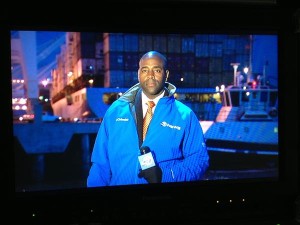TV News has become more dangerous! Crews & the Dangerous Downside of Covering News
Has the business of local TV news become more dangerous? Or are young journalists just freaked out by the recent events in Roanoke?
Many of us remember when being on television was considered a hallowed profession. TV news people were seen as local celebrities. There was a sense of respect when we ventured into the community. For the most part, that respect has been replaced by distrust and scorn. Public esteem for journalists has fallen to an all-time low. More than 70% of Americans think journalists contribute “not very much” or “nothing at all” to society. Only lawyers got lower marks than journalists.
 Nowhere is that lack of respect more evident than at insipid “live shots,” where local TV news crews are most vulnerable and exposed. Poynter’s Al Tompkins says, “Part of the problem, it seems to me, is that stations are asking these crews to be live in places where trouble is predictable — after a sporting event, for example, where people come out all emotional and sometimes liquored up.”
Nowhere is that lack of respect more evident than at insipid “live shots,” where local TV news crews are most vulnerable and exposed. Poynter’s Al Tompkins says, “Part of the problem, it seems to me, is that stations are asking these crews to be live in places where trouble is predictable — after a sporting event, for example, where people come out all emotional and sometimes liquored up.”
Almost every reporter and photographer interviewed by TheWrap recalled at least one life-threatening situation. Protest rallies with large crowds and assignments in high-crime neighborhoods are the most dangerous, especially late at night. Bright lights and brightly colored live trucks seem to attract troublemakers.
“They’re rolling circus wagons, rolling billboards, advertising to everybody who we are and what we’re doing, and it really leaves us especially vulnerable because it just advertises our location,” said Gary Johnson, who retired in August after 38 years as a photog for KCBS-2 in Los Angeles.
A female reporter in New York City said she’s been harassed so many times that she has trained herself to constantly keep an eye out for potential attackers, especially during live shots.
“I focus on everything else around me until the moment I have to talk,” she said. “I’m always looking around… if I have to get out, I’m out. I don’t care. I’ll just run.”
Tompkins believes reporters, photographers, and producers need better safety training “so that they can know how to properly assess danger and know what to do if they get into a tight spot.”
Veteran reporter and anchor Al Naipo, who spent 20 years at KTTV-11-Fox in El Lay, agrees. “If it’s a reporter or photographer that believes that this is not a good situation to be in, they should be able to make that call and kill the story,” he said. “They should be able to do that without any type of blow-back from the newsroom.”
Or, as most newsroom managers know, live shots are being interrupted because there are plenty of people out there who are sick and tired of the TV telling them about BREAKING NEWS that isn’t. They’ve soured on local TV’s focus on celebrity and crime. They’re telling you that you don’t belong out on the street with a camera crew, doing a live shot about a non-story. They see reporters as shallow, pumped up, self-absorbed posers. They see your TV news business as a farce. They are demonstrating against you in the only way they know how. They are practicing television terrorism.

